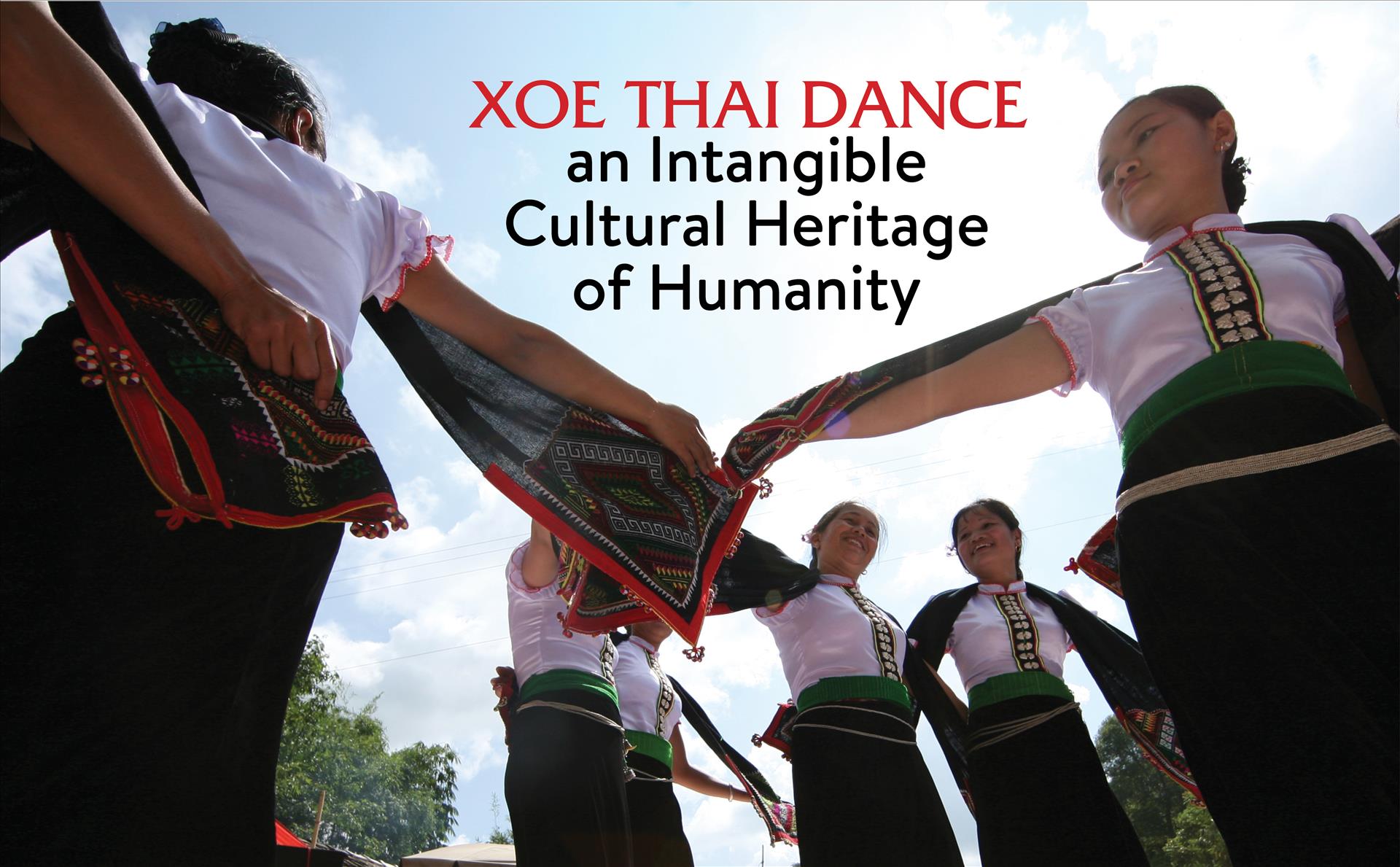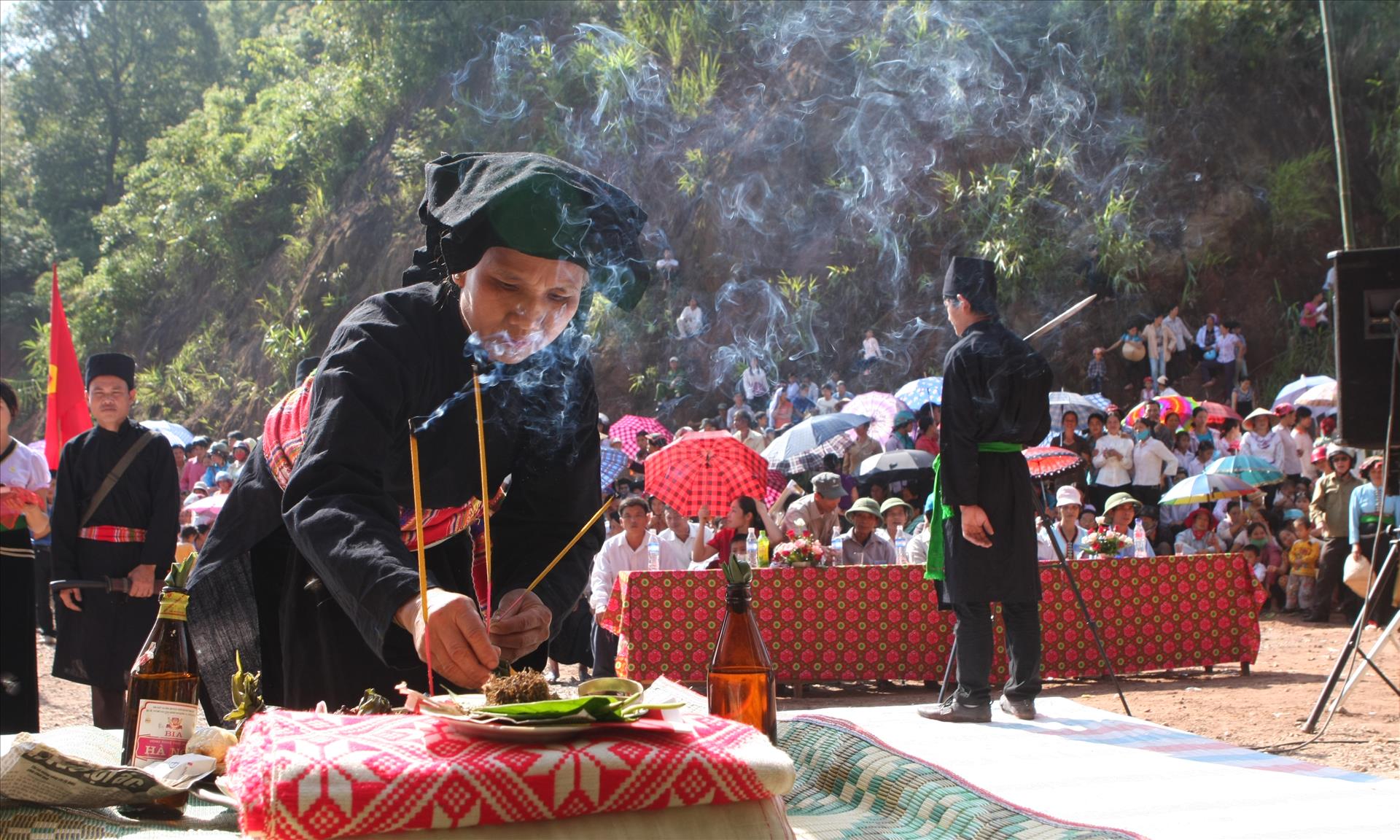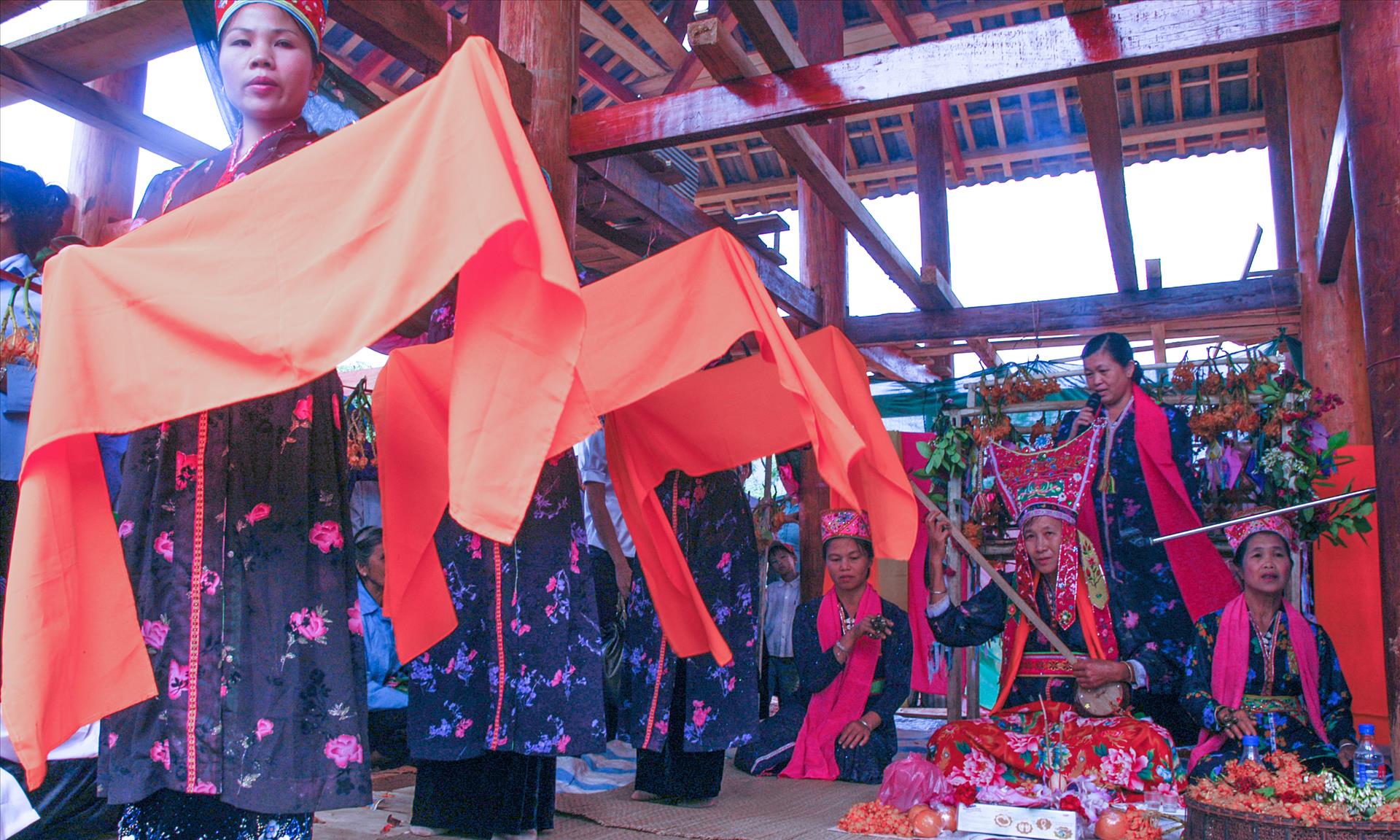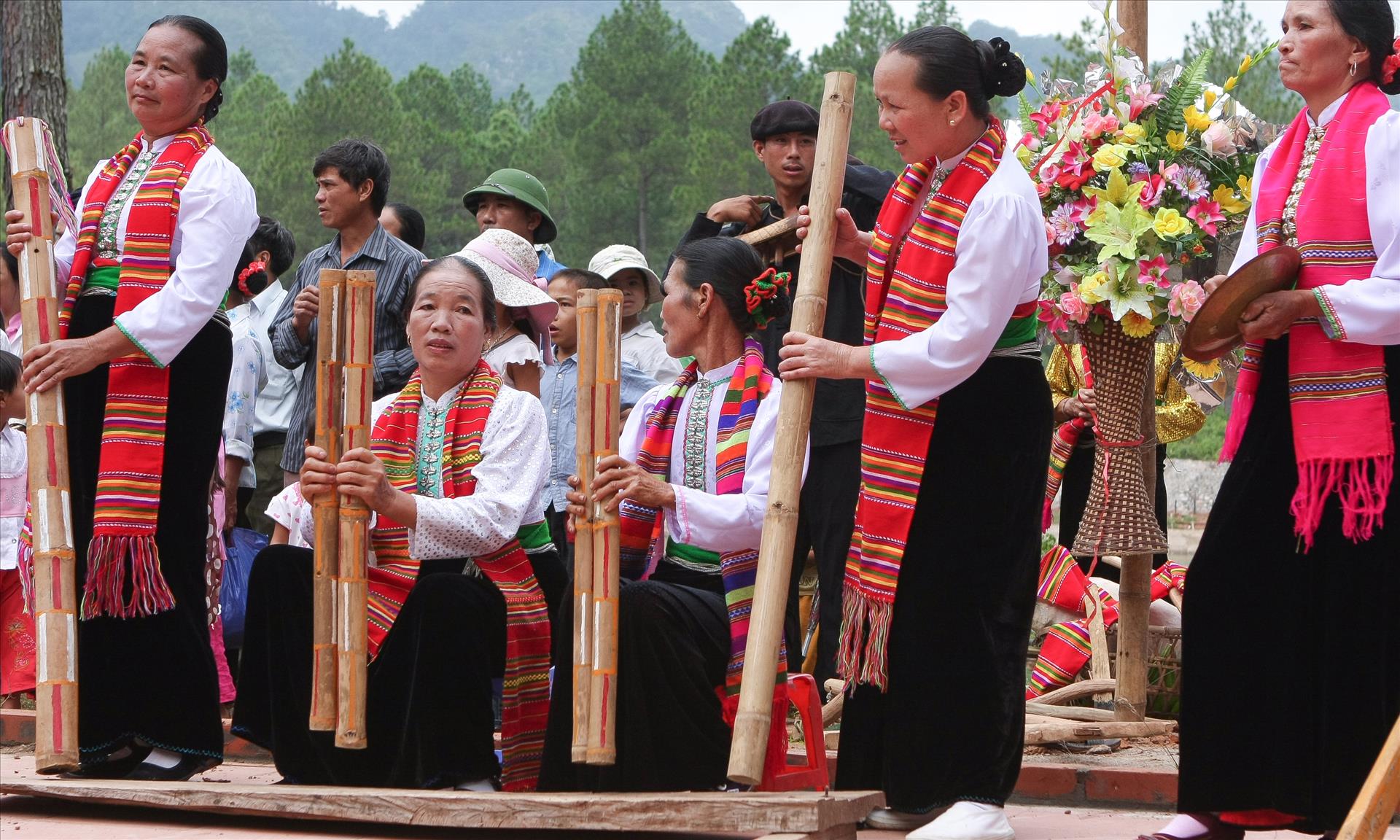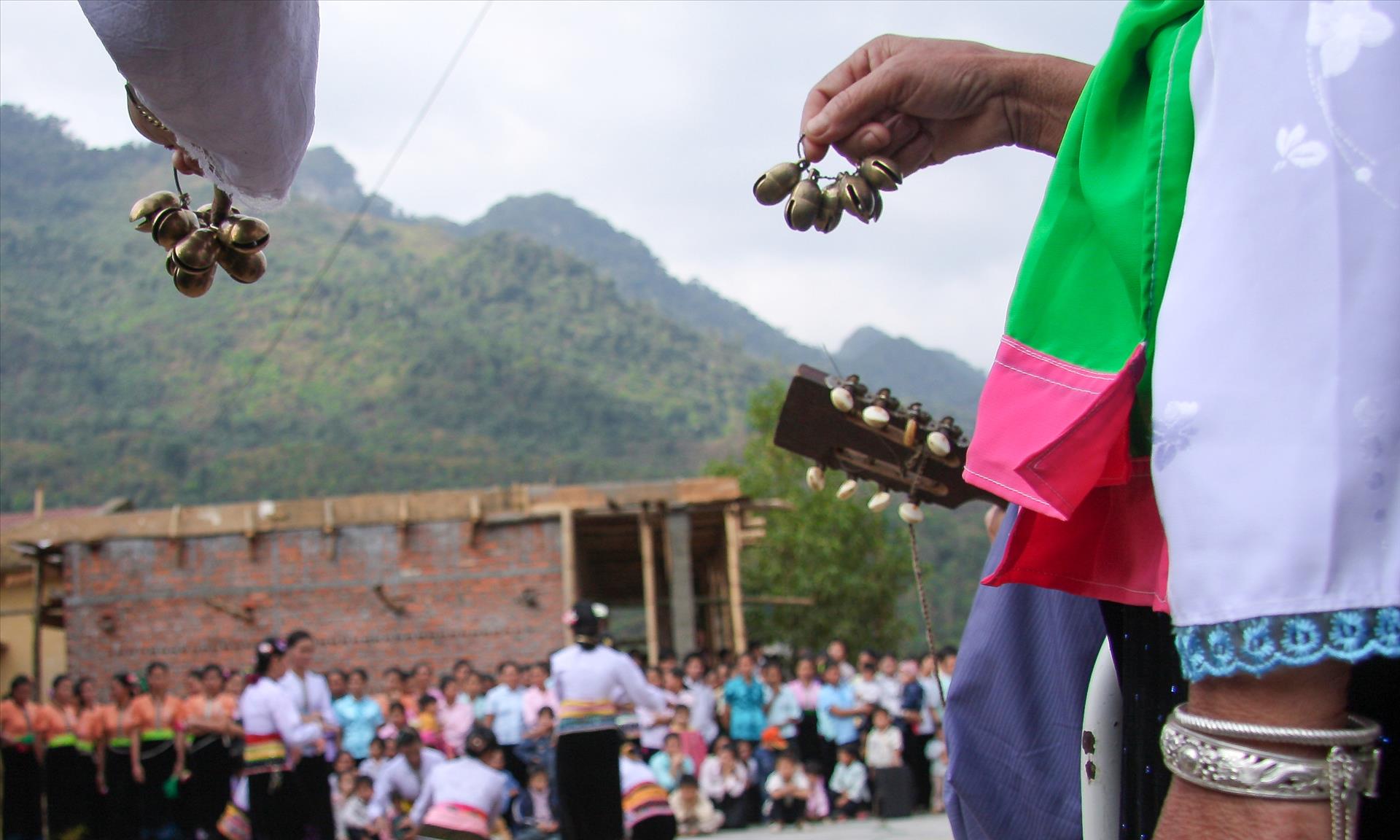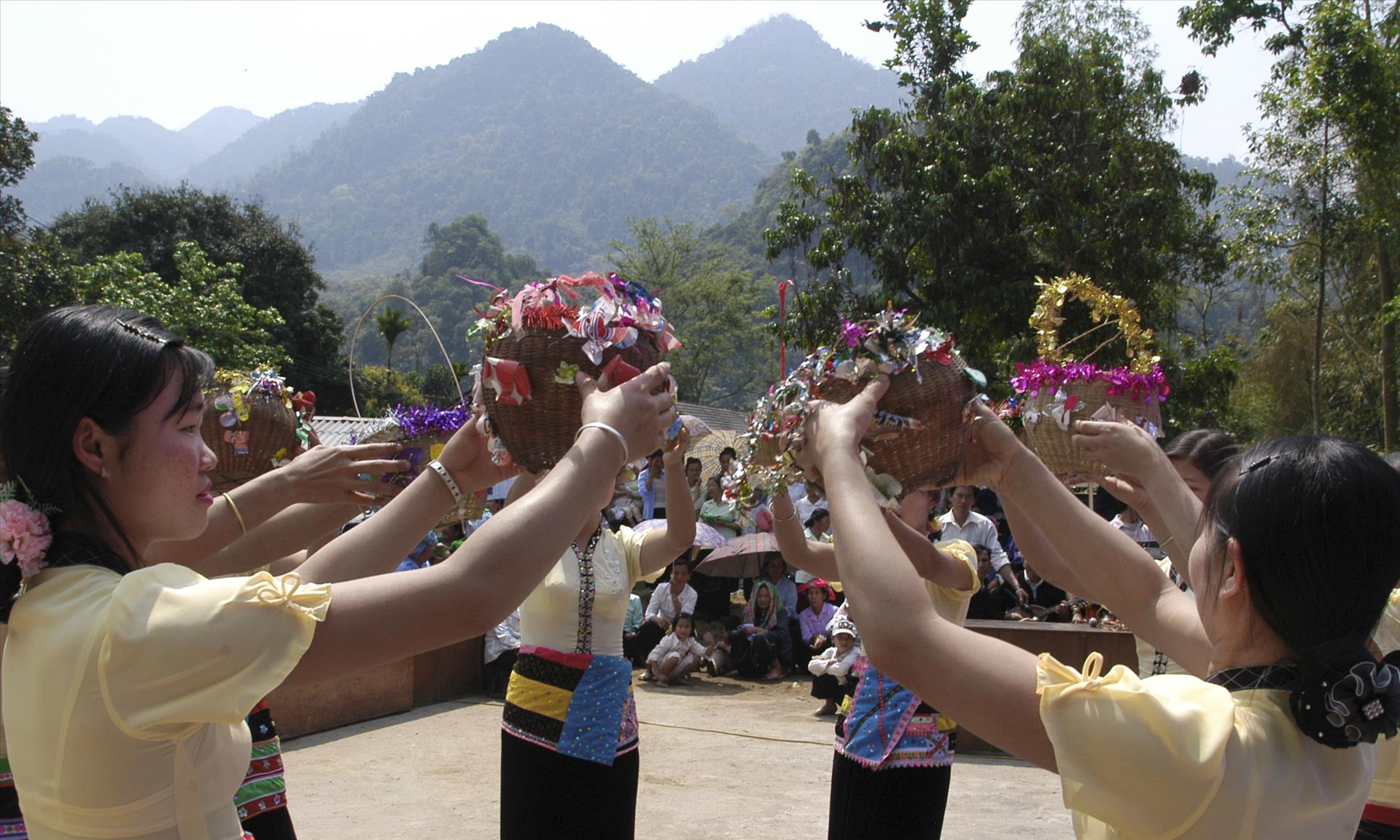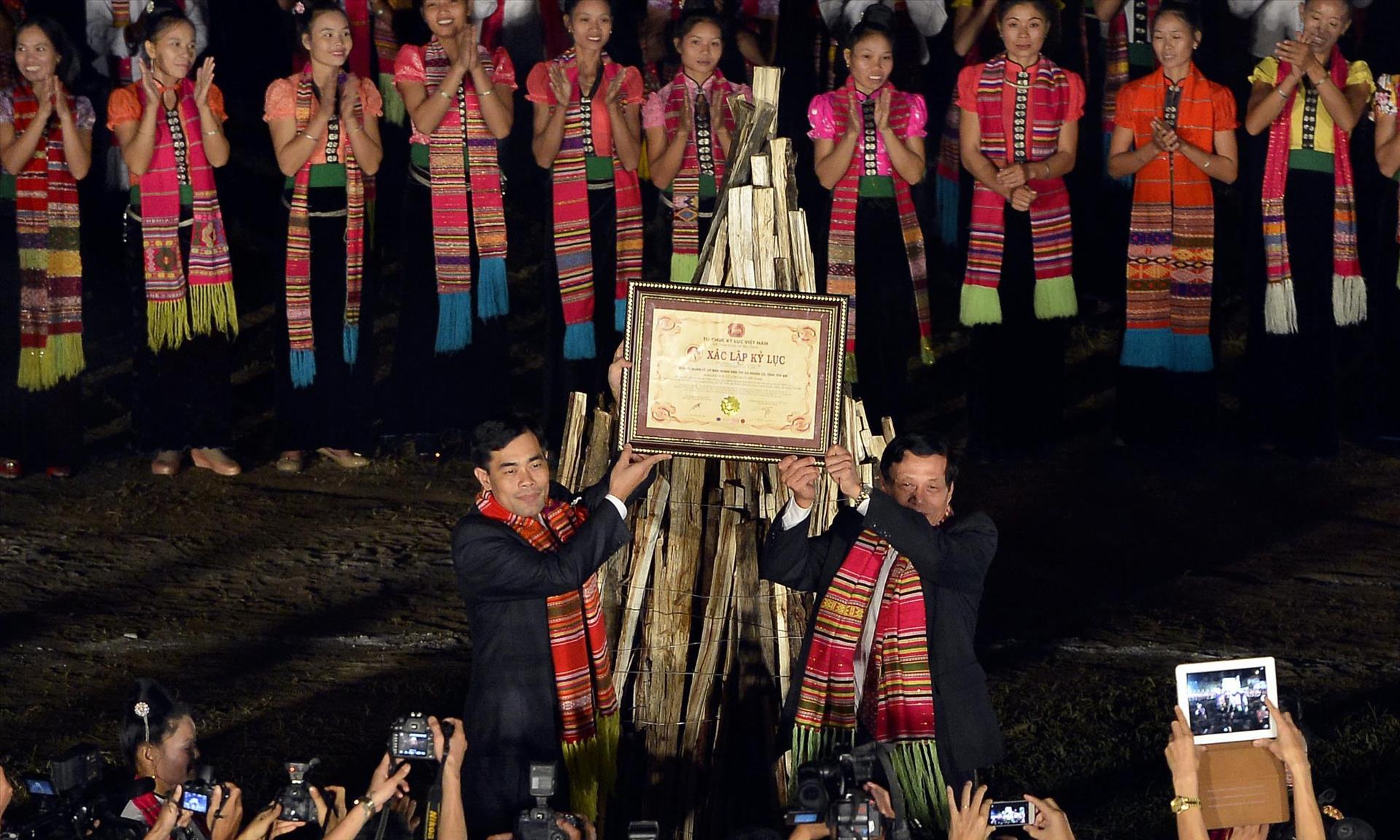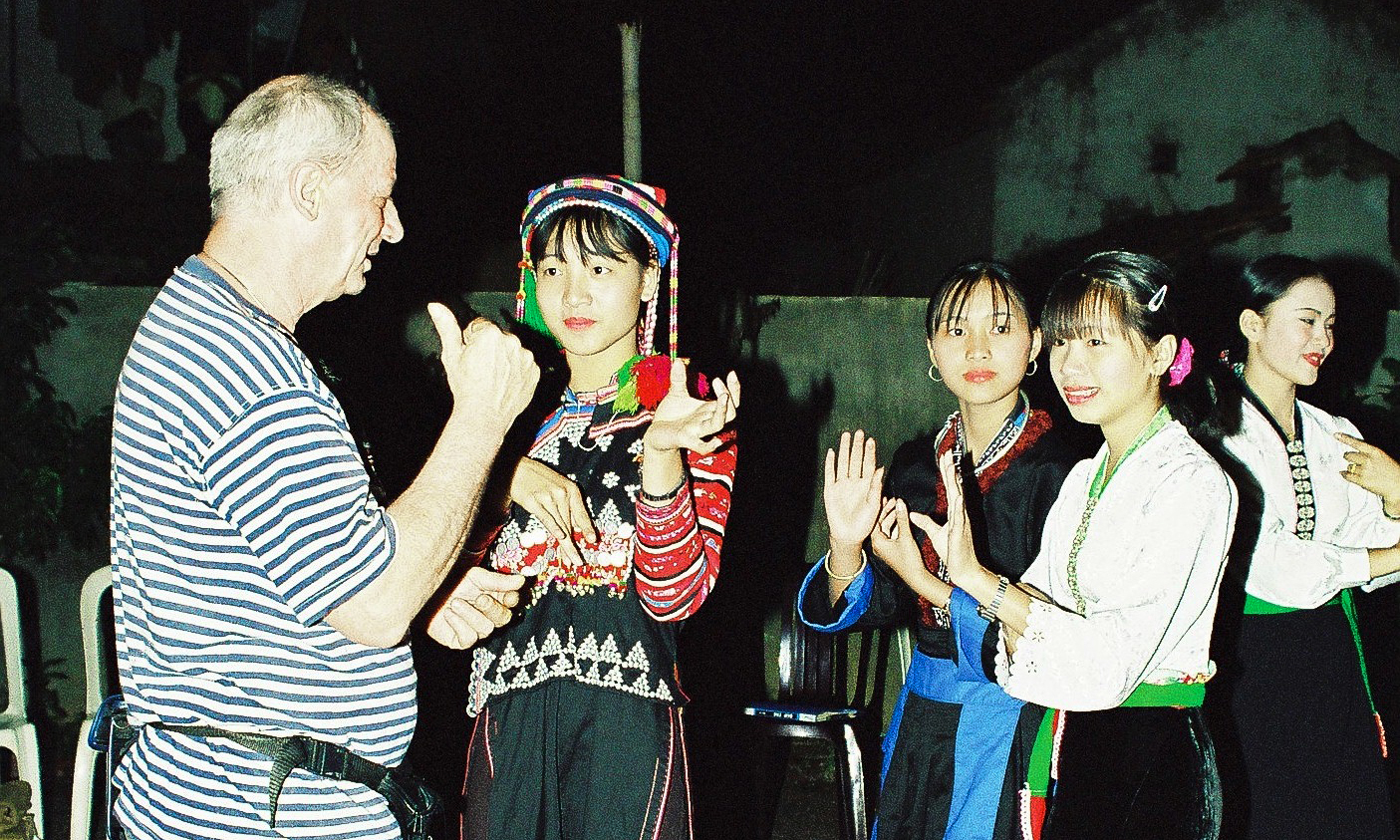Xoe Thai dance, an Intangible Cultural Heritage of Humanity
It is believed that the art of Xoe dance of Thai ethnic minority in the northwestern region of Vietnam has existed for about 10 centuries.
Xoe means a dance representing human activities in rituals, cultural activities, life and labor. It originally consisted of simple movements, then developed into a unique type of traditional dance of the Thai in the Northwest. As a form of connecting people’s aspirations with the divine world, Xoe is performed at ceremonies, weddings, festivals and cultural events of the community. It was listed as an Intangible Cultural Heritage of Humanity at the 16th session of UNESCO's Intergovernmental Committee for the Safeguarding of the Intangible Cultural Heritage in December 2021.
The cradle of Xoe dance
According to the ancient books of the Thai in the northwest, around the 10th century, Mr. Lac Truong, the chieftain in the Muong Lo region (present-day Yen Bai province) was the founder of Xoe. He also helped the Thai to reclaim the new land of Muong So (in present-day Phong Tho district, Lai Chau province) and build hamlets there. It is in this place where Xoe has flourished and become very popular throughout the northwest.
Xoe dance founded by chieftain Lac Truong originally consisted of only simple movements such as men and women holding hands with each other and forming a circle around a flame. They moved and cheered in rhythm with the aim of driving away wild animals and lessening fear at night as well as showing solidarity in the community. Then, to make the dance more involved, the Thai performed it with musical instruments, including the dan tinh, or tinh tau (gourd lute), drums, a Vietnamese two-chord fiddle and some types of gongs.
According to artisan Lo Van Bien in Trung Tam ward, Nghia Lo town, an expert in Thai culture in Muong Lo, there are about 36 Xoe dances, which have been developed, protected and handed down through generations over hundreds of years. The ritual and presentational Xoe dances are often named after props used during certain performances such as Xoe khan (dance with scarfs), Xoe non (dance with conical hats), Xoe quat (dance with fans), Xoe sap (dance with bamboo poles), Xoe nhac (dance with music), Xoe gay (dance with sticks), and Xoe hoa (dance with flowers). Bien said that all Xoe dances originated and were reformatted for performances from the 6 ancient ones - the origin of the folk-dance art of the Thai, but they retained the unique cultural features of the Thai. The dances are not only for performance, but also convey views of life, ways of thinking and lifestyles of the Thai community. For example, Xoe vong (circle dance) shows the solidarity and unity of the community or “kham khan moi lau" - an invitation to neighbours to drink rice wine.
.This is a Xoe dance showing the culture in communication and behavior of the Thai. According to the Thai, anyone who comes to visit the house is welcomed very respectfully and sincerely. The most stirring and alluring dance is nhom khan (dance with scarves) that express the joy and happiness of a wedding or new house celebration.
Before the Dien Bien Phu victory in 1954, the whole Thai area in Muong So was under the rule of king Deo Van An, a sentimental lord who was fond of Xoe dances, so there were hundreds of Xoe troupes in the region and Xoe festivals were held regularly. During the festivals, Thai boys and girls from Muong villages flocked to the two banks of the Nam Na river to talk to each other and dance Xoe together. When the night came, the singing and the sound of the pipe chirping under the flickering firelight created dreamy nights of Xoe dances in the northwest and the Xoe circles were getting bigger and seemed like it would never end.
According to Dr. Nguyen Thi Hien, former Deputy Director of the Vietnam National Institute of Culture and Arts, there are three main types of Xoe dancing, including Xoe nghi le, Xoe bieu dien and Xoe vong. From 1990 until now, Xoe Thai troupes have flourished. In 2019, there were 180 teams in Yen Bai province, 1,273 teams in Dien Bien, more than 100 teams in Lai Chau and about 1,700 teams in Lai Chau. These teams have helped promote and hand down the art to younger generations.
During the French colonial period, as a folk dance, Xoe became a "court dance" performed for the chiefs of the northwest region and the French mandarins. Late artisan Lo Thi Phe, who was a member in the Xoe troupe of Thai king Deo Van An, said that the Xoe team from Muong So in the period prior to 1954 traveled to Paris to perform dances of Xoe hoa, Xoe non and Xoe khan which fascinated foreigners at that time.
Over the years, from only being performed in Muong Lo and Muong So, Xoe dance has strongly developed to become a cultural "treasure" of the Thai and a symbolic dance of the solidarity of the ethnic groups in the region.
Tourism in the region of Xoe dance
In the northwest today, the Thai mainly reside in 4 areas, including Muong Thanh (Dien Bien), Muong Lo (Yen Bai), Muong Than (Lai Chau) and Muong Tac (Son La) which have 4 famous Xoe artistic troupes. Therefore, visiting these areas, tourists will have a chance to enjoy the unique "Xoe dance party" of the locals.
Ms. Do Thi Tac, a folklore culture researcher in Lai Chau province, said that Xoe chieng is the biggest spring festival of the Thai community in the northwest in general and in Muong Than in particular. The white Thai organize Xoe chieng to pray for good weather, good crops and a peaceful village. Xoe chieng festival is so famous that it is compared to a party of many fascinating dances, just like a party with many delicious dishes.
In the valley of Dien Bien district and Dien Bien Phu where the Black Thai are living, Xoe has been developed into a tourism product by the Provincial People's Committee. For this reason, going to Dien Bien today, besides visiting scenic spots, learning about the historical sites associated with Vietnam’s Dien Bien Phu Victory, tourists will have a chance to enjoy the enchanting Xoe festival night. There are more than 1,000 Xoe troupes of Black Thai in Men village, Ten village, Co My village and Phieng Loi village.
The Thai in Mai Chau (Hoa Binh) also established Xoe troupes to serve tourists. The two villages of Lac and Pom Coong which develop community tourism products have about 10 Xoe teams. Ms. Vi Thi Tuyet, a member of the Xoe team in Lac village, said, "We, the Thai, learn how to dance Xoe while growing up".
For the Thai, Xoe is an indispensable part in their cultural activities and spiritual life. Therefore, if there are no Xoe dances, rice is not good and the paddy is exhausted. Xoe symbolizes beauty, containing the artistic values of dance, music, singing, costumes, cuisine and more importantly, the cultural behavior of the Thai community. Today, the art of Xoe dance has become a symbol of hospitality, and a mark of ethnic culture, as well as an important cultural identity for the Thai in northwestern Vietnam.
Story: Phong Thu
- Photos: Phong Thu, VNP & VNA
- Designer: Trang Nhung
